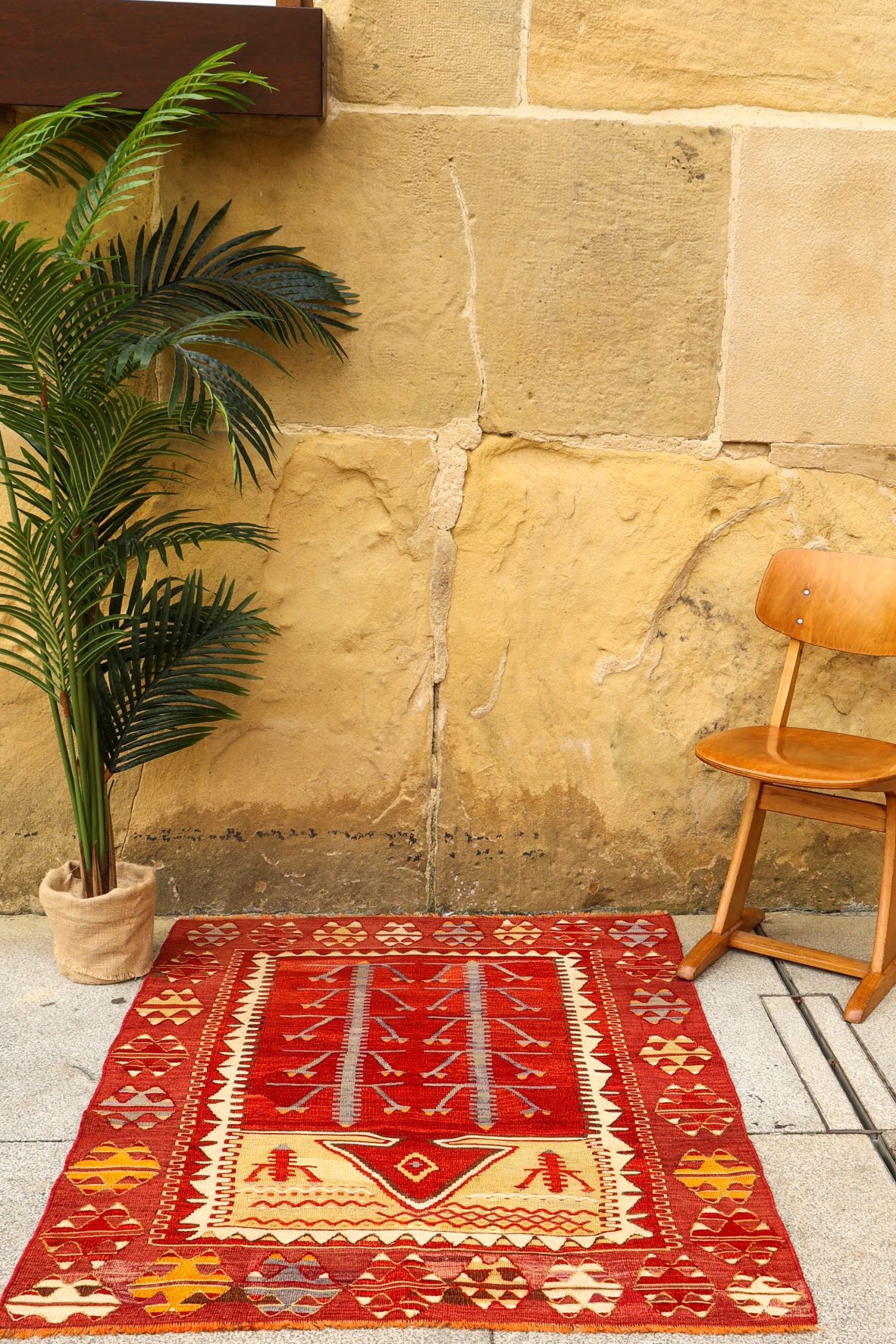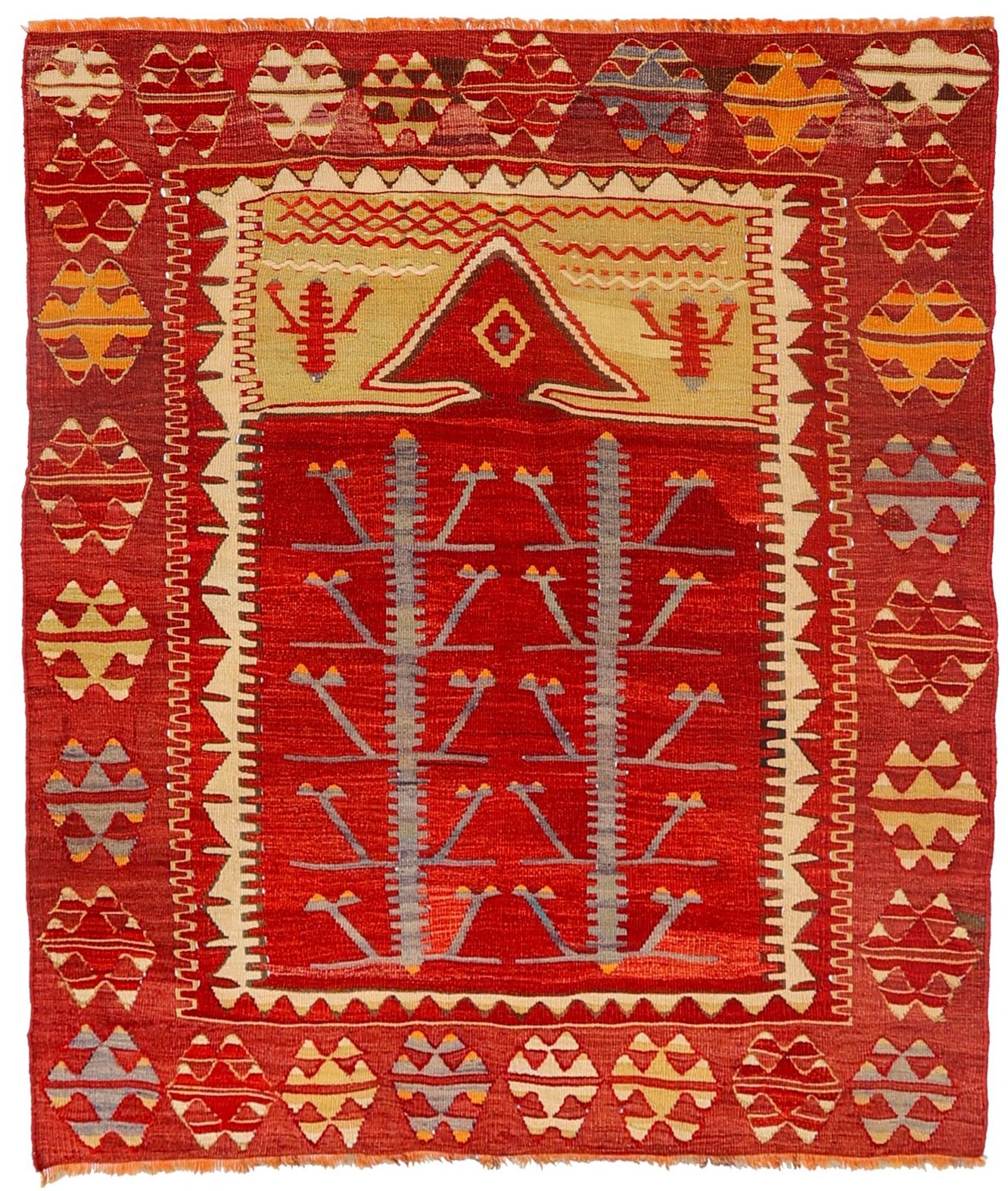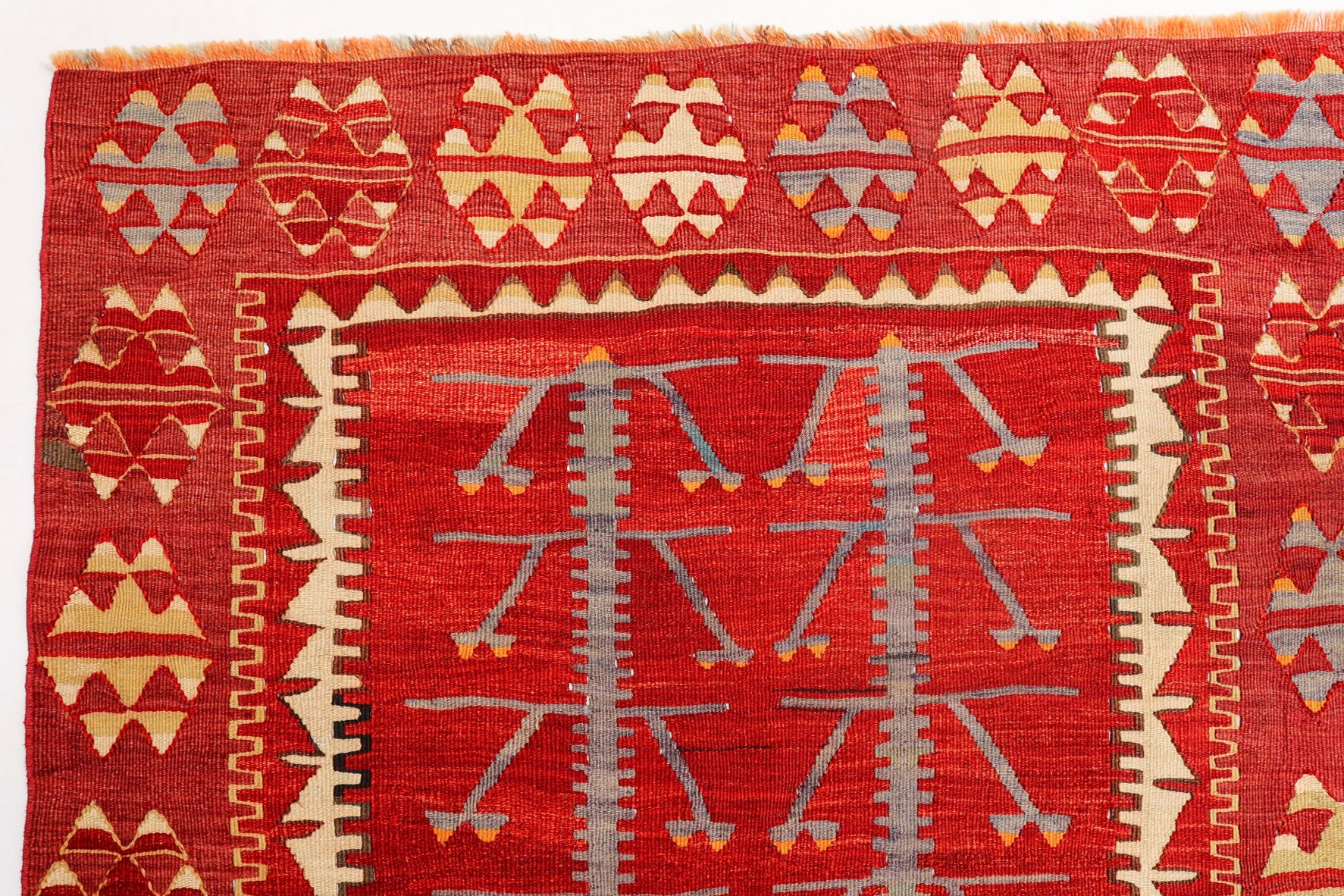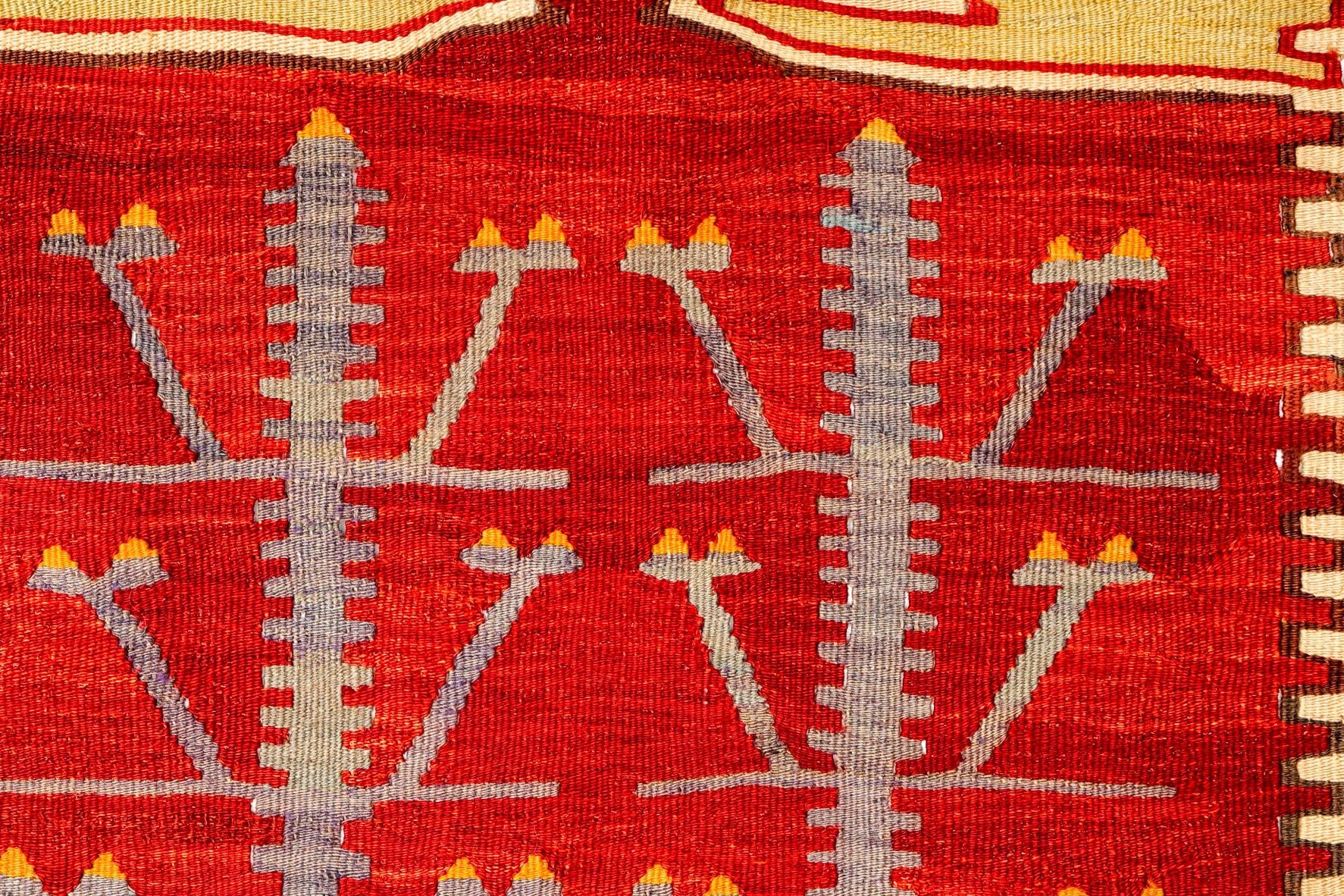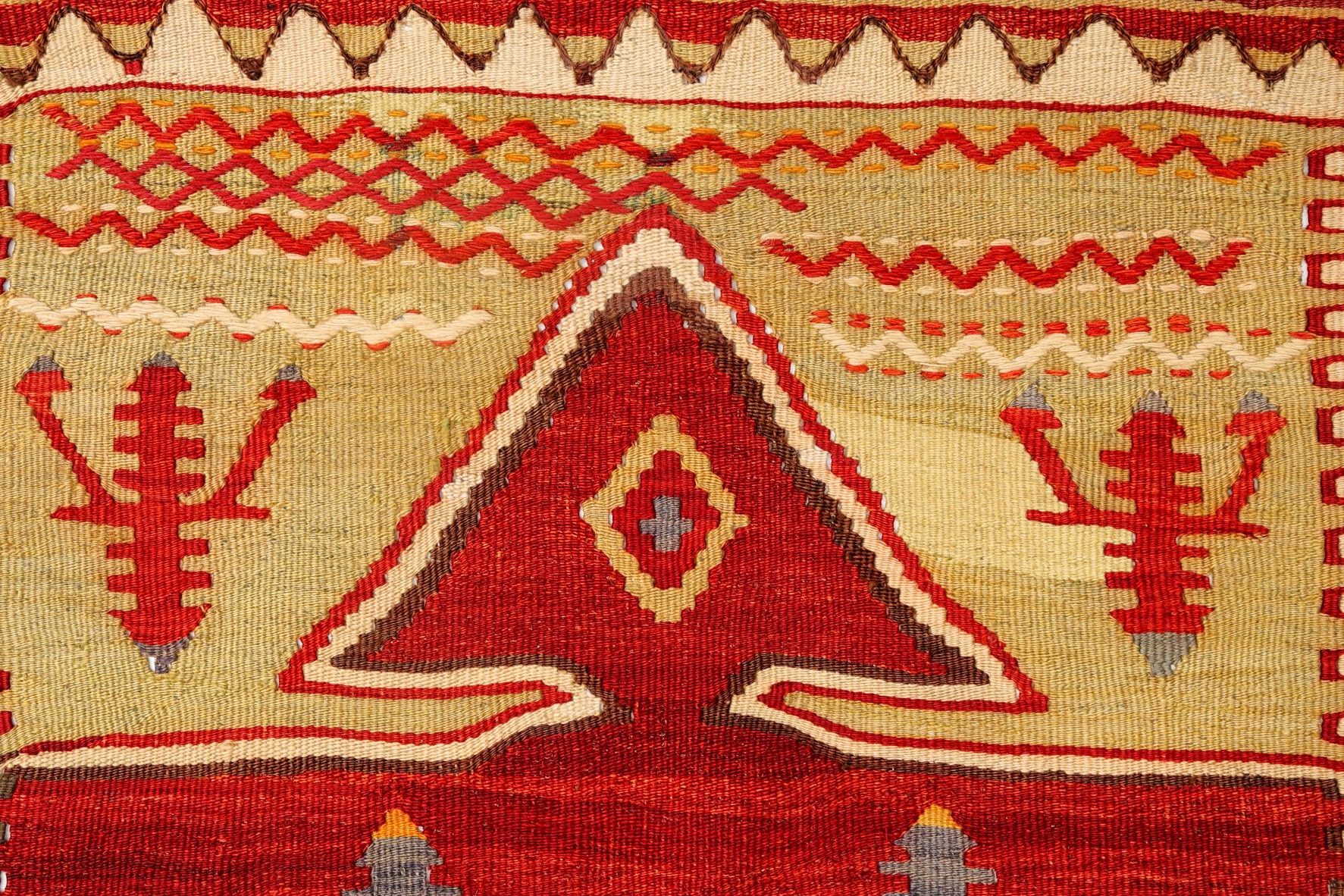875.00 €
This prayer kilim has a couple of trees of live woven in the central field. In the Mihrab, a motif resembling an eye has been woven for protection. A prayer kilim with a strong and powerfull design.
Material: 100% hand-spun sheep wool
Size: 130×110 cms
Origin: Turkey
Date of weaving: 1950s
Kilims or Gilims are flatwoven textiles with a woollen weft on a woollen, goat hair or cotton warp. There are many different techniques and designs. The weaver normally works within a tradition of techniques, motifs and designs specific to a particular area or ethnic group. The designs relate to her natural surroundings, protection, fertility and the harmony of family relationships. Each weaver adds something from her own creativity and sense of composition. Kilims are often woven as part of a marriage dowry and can be used to create many different objects like storage bags, horse-blankets, baby carriers, blankets and wall and floor coverings.
This vintage kilim was hand-woven on a simple loom by a village or nomadic weaver for her own use. Probably the weaver used wool from her own sheep. The wool was first cleaned, then hand-carded, hand-spun and finally dyed by hand, often using natural dye materials like roots, nuts, berries, fruits, flowers and plants. Kilims from the last quarter of the twentieth century mostly use synthetic dyes. This kilim would have taken many months to complete.
All our kilims selected in the country of origin and are professionally washed and restored before we import them directly from Iran, Turkey and Afghanistan. Natural patina and charming imperfections in design and colour (abrash) are highly valued characteristics of hand-woven kilims.
n Islam, a prayer mat is placed between the ground and the worshipper for cleanliness during the various positions of Islamic prayer. These involve prostration and sitting on the ground. A Muslim must perform wudu (ablution) before prayer, and must pray in a clean place.
For Muslims, when praying, a niche, representing the mihrab of a mosque, at the top of the mat must be pointed to the Islamic center for prayer, Mecca. All Muslims are required to know the qibla or direction towards Mecca from their home or where they are while traveling. Oriental Orthodox Christians position their prayer rugs so that they face east, the direction of prayer towards which they offer prayer.
1 in stock
Additional information
| Weight | 1.8 kg |
|---|
Subscribe and receive the lastest news
